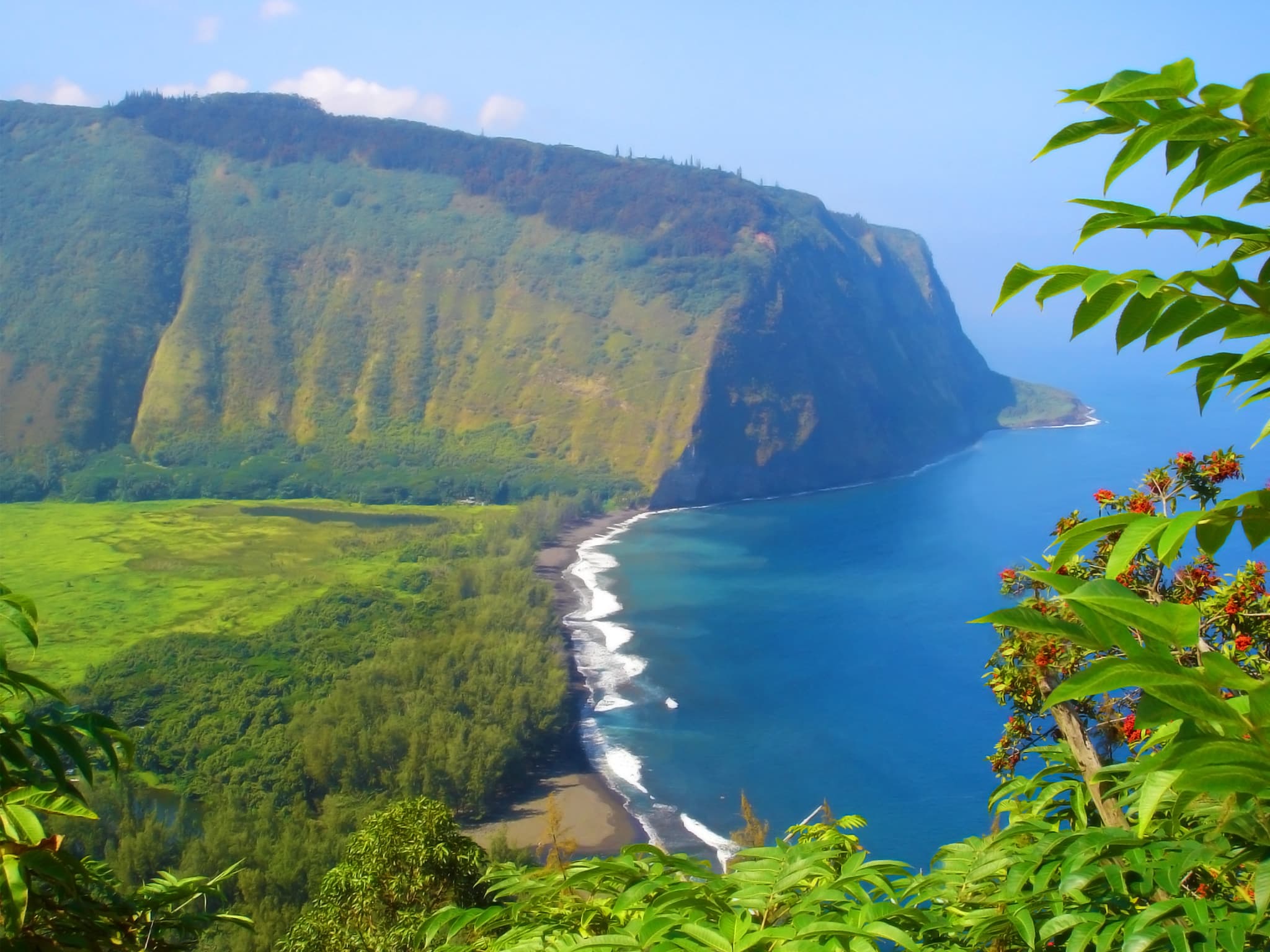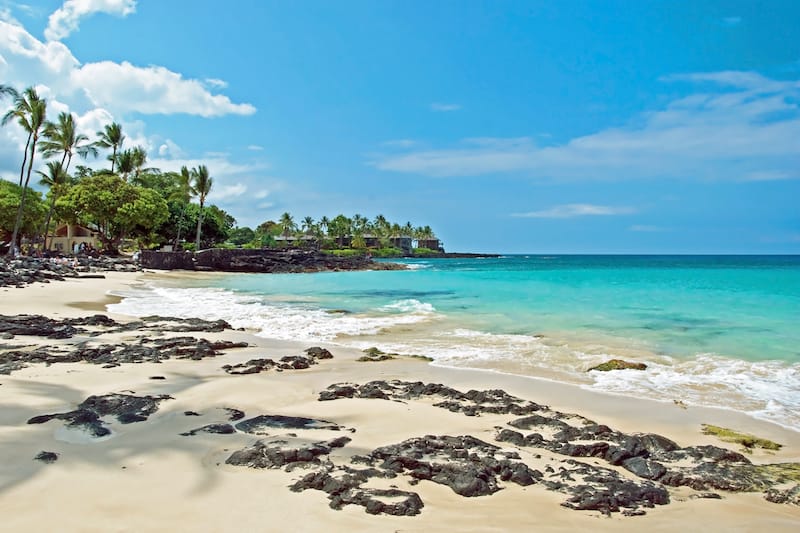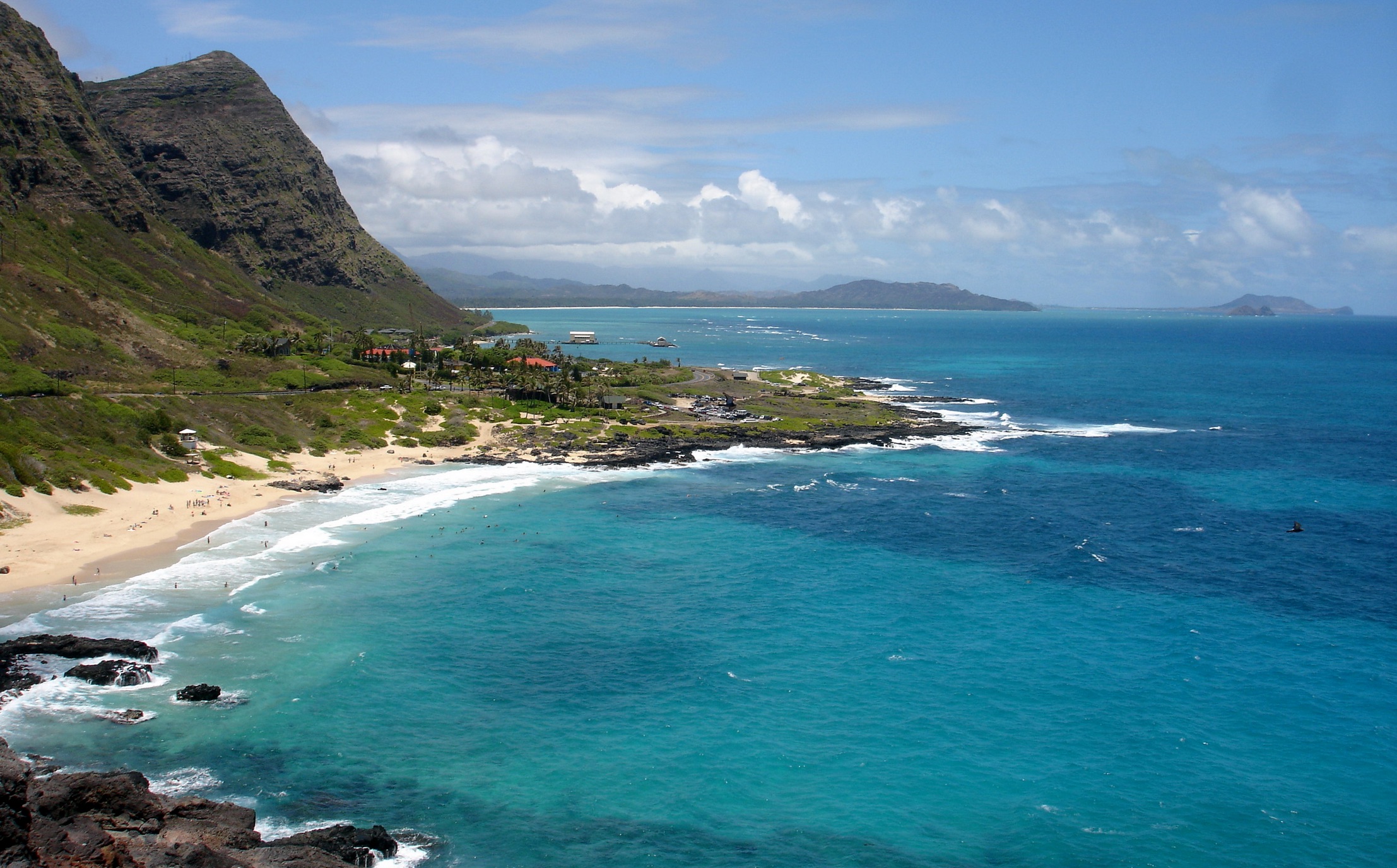Kona’s Natural Beauty and Activities

Kona, Hawaii, is a captivating destination that blends stunning natural beauty with vibrant cultural heritage. Its volcanic origins have shaped a diverse landscape, offering breathtaking vistas and a wide range of outdoor activities.
Volcanic Origins and Diverse Landscapes
Kona’s dramatic landscapes are a testament to its volcanic origins. The island of Hawaii, known as the Big Island, is the youngest and largest of the Hawaiian Islands, formed by the continuous eruption of five shield volcanoes. The Kona Coast is primarily situated on the western slopes of Mauna Loa and Hualalai, two of the world’s most massive volcanoes. The volcanic activity has created a unique topography characterized by:
- Volcanic Craters and Caldera: The island boasts numerous volcanic craters and calderas, such as Kealakekua Bay, a natural harbor formed by a volcanic collapse.
- Lava Flows and Black Sand Beaches: The solidified lava flows have created black sand beaches, such as Punalu’u Black Sand Beach, known for its striking contrast against the turquoise waters.
- Rolling Hills and Lush Forests: The volcanic soils are fertile, supporting lush rainforests and rolling hills, providing a vibrant green backdrop to the coast.
Outdoor Activities in Kona
Kona offers a plethora of outdoor activities that cater to diverse interests. The warm, clear waters of the Pacific Ocean provide an ideal setting for:
- Snorkeling and Scuba Diving: The waters around Kona are teeming with marine life, including colorful coral reefs, tropical fish, sea turtles, and even manta rays.
- Whale Watching: During the winter months (November to May), humpback whales migrate to the warm Hawaiian waters to breed and give birth. Kona is a prime location for whale watching tours.
The island’s volcanic landscape provides opportunities for:
- Hiking: Numerous hiking trails wind through Kona’s diverse landscapes, ranging from short walks to challenging climbs.
- Exploring the Kona Coffee Belt: The Kona Coffee Belt, situated on the slopes of Hualalai, is renowned for its high-quality coffee. Visitors can tour coffee farms, learn about the coffee-growing process, and enjoy a taste of Kona coffee.
Local Wildlife and Marine Life
Kona’s ecosystem is rich in biodiversity, with a variety of endemic species that have adapted to the unique environment.
- Hawaiian Monk Seal: The endangered Hawaiian monk seal is a critically important species that calls the Kona Coast home. These seals are often spotted basking on the beaches or swimming in the shallow waters.
- Green Sea Turtles: Green sea turtles are a common sight in Kona’s waters. They are herbivores that feed on algae and seaweed, playing a vital role in maintaining the health of the coral reefs.
- Hawaiian Spinner Dolphin: These playful dolphins are often seen leaping and spinning in the waves, creating a captivating spectacle for visitors.
- Birds of Paradise: Kona is home to several species of birds of paradise, including the Hawaiian honeycreeper, a group of small, brightly colored birds that are endemic to the Hawaiian Islands.
Cultural Significance of Kona
Kona has a rich cultural heritage that is deeply intertwined with the natural environment. The area was once home to several ancient Hawaiian settlements, and many traditional practices and beliefs are still observed today.
- Ancient Hawaiian Traditions: The ancient Hawaiians believed that the land, the ocean, and all living things were interconnected and sacred. They developed a complex system of beliefs and practices that reflected this deep reverence for nature.
- Heiau (Temples): Kona is home to several ancient heiau, or temples, which were used for religious ceremonies and rituals.
- Traditional Crafts: The area is known for its traditional crafts, including weaving, carving, and hula dancing. These crafts are a vital part of the Hawaiian cultural heritage and provide a glimpse into the past.
Kona’s Cultural Heritage and History

Kona’s rich cultural tapestry is a testament to its fascinating past, shaped by ancient Hawaiian traditions, European encounters, and a vibrant mix of Asian influences. This journey through time reveals how Kona evolved from its humble beginnings to become the renowned tourist destination it is today.
The Legacy of Ancient Hawaiians, Kona hawaii
The story of Kona begins with the arrival of the first Polynesians, who navigated the vast Pacific Ocean to reach the shores of Hawaiʻi. They established a thriving society based on deep respect for the land and its resources. Their legacy is evident in the ancient Hawaiian traditions that still permeate Kona’s culture. These traditions include:
- ʻOhana (Family): The concept of ʻohana, which emphasizes the importance of family and community, remains a cornerstone of Hawaiian culture.
- Aloha: The spirit of aloha, meaning love, compassion, and respect, is deeply ingrained in the Hawaiian way of life. It is a fundamental value that guides interactions between people.
- Hula: The traditional Hawaiian dance, hula, is a powerful form of storytelling that honors the gods, ancestors, and nature. It continues to be a vibrant expression of Hawaiian culture.
The Rise of Kona Coffee
The arrival of Captain Cook in 1778 marked a turning point in Kona’s history. European contact brought new ideas and practices, including the introduction of coffee in the early 19th century. The volcanic soil and unique microclimate of Kona proved ideal for growing coffee, and the region soon became known for its exceptional beans.
- Kona’s Coffee Culture: Coffee cultivation became an integral part of Kona’s economy and cultural identity. The region’s unique coffee beans, prized for their smooth flavor and rich aroma, are meticulously cultivated using traditional methods that have been passed down through generations.
- Coffee Farms and Estates: Kona is home to numerous coffee farms and estates, many of which have been in operation for over a century. Visitors can explore these farms, learn about the coffee-growing process, and sample the distinctive flavors of Kona coffee.
- Coffee Festivals: Kona celebrates its coffee heritage with annual festivals that showcase the region’s finest beans and attract coffee enthusiasts from around the world.
Cultural Crossroads
Kona’s cultural landscape has been enriched by the influence of various cultures. Beyond the original Polynesian roots, European and Asian influences have left their mark on the region’s history and traditions.
- European Influences: European contact introduced new agricultural practices, technologies, and religious beliefs. The legacy of European influence is evident in Kona’s architecture, language, and food.
- Asian Influences: A significant Asian population arrived in Kona during the 19th and 20th centuries, primarily from Japan, China, and the Philippines. Their contributions have enriched Kona’s cuisine, arts, and cultural landscape.
Kona’s Artistic Expressions
Kona’s vibrant art scene reflects its diverse cultural heritage. Traditional Hawaiian crafts and contemporary art forms co-exist, offering a rich tapestry of artistic expressions.
- Traditional Hawaiian Crafts: Kona artisans continue to practice traditional Hawaiian crafts, such as weaving, carving, and featherwork. These crafts are not only beautiful but also serve as reminders of the ancient Hawaiian values of sustainability and connection to the natural world.
- Contemporary Art: Kona’s contemporary art scene is flourishing, with artists exploring themes of nature, culture, and identity. Galleries and studios showcase a diverse range of art forms, from painting and sculpture to photography and digital art.
Planning a Trip to Kona: Kona Hawaii

Kona, Hawaii, offers a unique blend of natural beauty, rich culture, and exciting activities, making it an ideal destination for travelers of all interests. Planning a trip to Kona involves considering various aspects, from transportation and accommodation to budgeting and creating an itinerary. This guide provides comprehensive information to help you plan a memorable trip to this Hawaiian paradise.
Transportation
Transportation in Kona is relatively straightforward, with multiple options to suit different preferences and budgets.
- Flying: Kona International Airport (KOA) is the primary airport serving the area. Numerous airlines offer direct flights from major cities across the United States and internationally.
- Renting a Car: Renting a car provides the flexibility to explore the island at your own pace. It’s particularly convenient for venturing beyond Kona town and visiting attractions along the coast and in the interior.
- Public Transportation: The County of Hawaii operates a public bus system that connects Kona town with other areas on the island. It’s a budget-friendly option for exploring specific areas.
- Taxis and Ride-Sharing Services: Taxis and ride-sharing services like Uber and Lyft are available in Kona town and surrounding areas. They are convenient for short-distance trips and can be a good option for evening transportation.
Accommodation
Kona offers a diverse range of accommodation options to suit every budget and preference.
- Hotels and Resorts: Kona is home to numerous luxury hotels and resorts, many offering beachfront locations, stunning views, and world-class amenities. These options cater to travelers seeking a comfortable and pampered experience.
- Vacation Rentals: Vacation rentals, including condos, apartments, and houses, provide a more home-like experience and often come with kitchens and laundry facilities. They are a popular choice for families or groups traveling together.
- Bed and Breakfasts: Charming bed and breakfasts offer a personalized experience, often with unique character and local charm. They provide a cozy and intimate setting for a relaxing stay.
Budget Considerations
Budgeting for a trip to Kona is essential for a stress-free and enjoyable experience.
- Flights: Flights to Kona can vary in price depending on the time of year and origin. Booking flights in advance, especially during peak season, can help secure better rates.
- Accommodation: Accommodation costs can range significantly depending on the type of lodging and location. Budget-friendly options include vacation rentals, hostels, and bed and breakfasts.
- Activities: Kona offers a wide range of activities, from snorkeling and diving to hiking and cultural tours. Consider your interests and allocate a budget for activities that align with your preferences.
- Food and Drinks: Hawaii is known for its fresh seafood and local cuisine. Dining can range from casual eateries to fine dining restaurants. Factor in your dining preferences and budget accordingly.
Sample Itinerary
A week-long trip to Kona allows for a balanced experience of relaxation, adventure, and cultural immersion. Here’s a sample itinerary to inspire your own planning:
- Day 1: Arrival and Kona Town Exploration. Check into your accommodation and explore Kona town. Visit the Kona Coffee Belt, sample local coffee, and enjoy dinner at a charming restaurant.
- Day 2: Kealakekua Bay Snorkeling and Sunset Cruise. Enjoy a snorkeling adventure in Kealakekua Bay, known for its abundant marine life. Take a sunset cruise to witness breathtaking views of the coastline.
- Day 3: Pu’uhonua o Honaunau National Historical Park and Manta Ray Night Dive. Visit the Pu’uhonua o Honaunau National Historical Park, a place of refuge in ancient Hawaiian culture. Experience a thrilling manta ray night dive, witnessing these magnificent creatures up close.
- Day 4: Volcano National Park and Lava Flow Hike. Embark on a day trip to Volcanoes National Park, marveling at active volcanoes, lava flows, and unique volcanic landscapes. Take a guided hike to witness the power of nature.
- Day 5: Coffee Plantation Tour and Hawaiian Luau. Visit a coffee plantation to learn about the process of growing and roasting Kona coffee. Enjoy a traditional Hawaiian luau with delicious food, music, and cultural performances.
- Day 6: Relaxation and Beach Time. Spend the day relaxing on the beautiful beaches of Kona. Enjoy swimming, sunbathing, or simply reading a book under the palm trees.
- Day 7: Departure. Depart from Kona International Airport (KOA) with memories of a memorable Hawaiian vacation.
Must-See Attractions and Hidden Gems
Kona offers a wealth of attractions, from iconic landmarks to hidden gems.
- Kealakekua Bay: A historic bay where Captain Cook first landed in Hawaii. It’s known for its snorkeling, kayaking, and whale watching opportunities.
- Pu’uhonua o Honaunau National Historical Park: A place of refuge in ancient Hawaiian culture, offering insights into the island’s rich history.
- Keauhou Shopping Center: A bustling center with shops, restaurants, and cultural attractions. It’s a great place to find souvenirs and experience local crafts.
- Kaloko-Honokohau National Historical Park: A park showcasing ancient Hawaiian fishponds and other historical sites, providing a glimpse into the island’s past.
- Captain Cook Monument: A monument commemorating Captain Cook’s landing in Hawaii, offering stunning views of the coastline.
- Mauna Kea Observatories: A collection of telescopes atop Mauna Kea, providing unparalleled views of the night sky.
- Hawaii Volcanoes National Park: A must-see attraction, showcasing active volcanoes, lava flows, and unique volcanic landscapes.
Practical Tips and Advice
To ensure a smooth and enjoyable trip, consider these practical tips:
- Book flights and accommodation in advance, especially during peak season.
- Pack light clothing, swimwear, sunscreen, and a hat.
- Rent a car for greater flexibility in exploring the island.
- Bring a reusable water bottle to stay hydrated.
- Respect local customs and traditions.
- Try local cuisine, including fresh seafood and Kona coffee.
- Attend cultural events and learn about Hawaiian history and culture.
- Consider purchasing a Hawaii Volcanoes National Park pass for multiple visits.
- Be prepared for potential weather changes, including rain and wind.
Kona Hawaii, a name that evokes images of turquoise waters lapping against volcanic shores, is a place where the spirit of aloha truly comes alive. From the moment you step onto its shores, you’ll be enveloped by the warm embrace of its people and the mesmerizing beauty of its landscape.
Discover the magic of Kona Hawaii for yourself, a tropical paradise unveiled in all its splendor, by exploring kona hawaii. The experience will leave an indelible mark on your soul, a testament to the power of nature and the beauty of human connection.
Kona, Hawaii, with its volcanic slopes and lush rainforests, offers a taste of paradise. But if you crave a different kind of adventure, consider exploring the vast wilderness of Alaska, where you can witness the majestic aurora borealis. You can score big deals on your Alaskan dream trip with alaska bogo , and return to Kona refreshed and inspired by the breathtaking beauty of the north.
